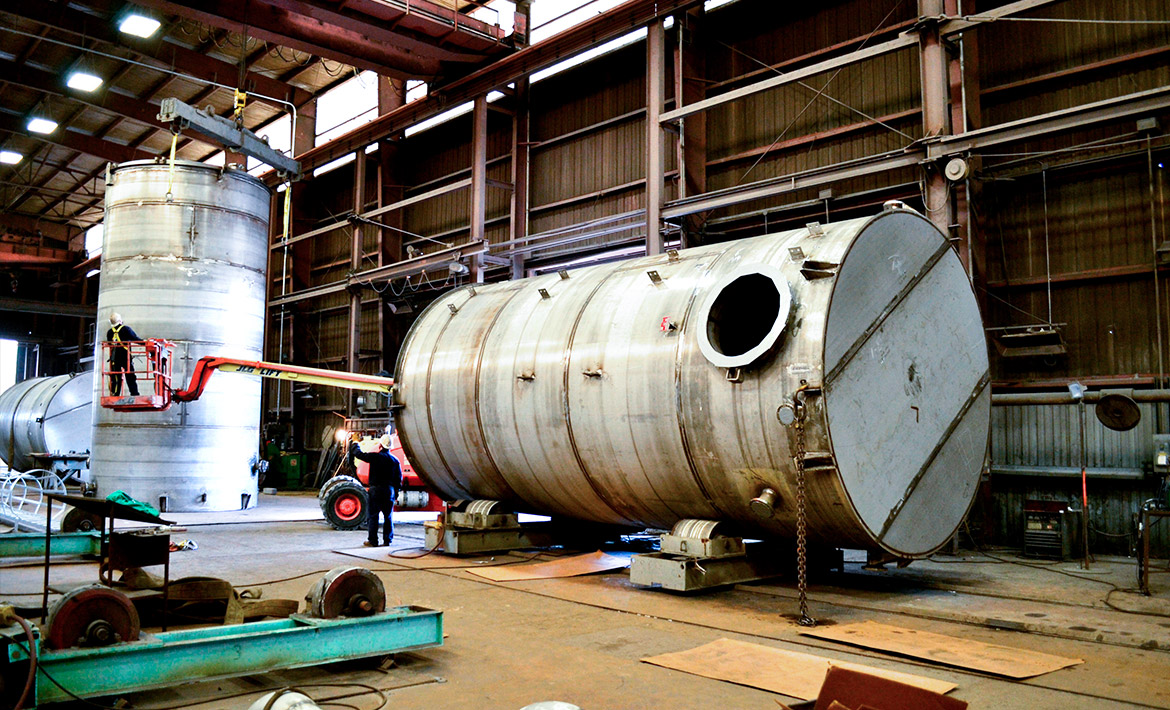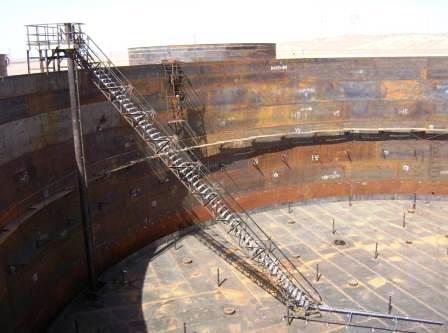Exactly How Welding Examination Works: A Comprehensive Guide for Professionals
Welding evaluation plays a vital function in making certain the safety and security and reliability of bonded structures. It includes an organized strategy that includes both aesthetic examination and progressed screening methods. Specialists have to acquaint themselves with key requirements and guidelines regulating the sector. Understanding the typical problems that can occur during welding is important. This overview will check out these components carefully, giving insights into the procedures that support quality and honesty in welding.
Recognizing the Significance of Welding Examination
While numerous might underestimate the relevance of welding inspection, it plays an essential duty in guaranteeing the stability and safety of welded frameworks. Reliable welding inspection determines possible flaws and imperfections that can compromise structural toughness and cause tragic failings. The evaluation procedure includes different techniques, such as aesthetic exams, ultrasonic screening, and radiographic analyses, each adding to the overall examination of weld quality.
Along with securing the architectural honesty, welding examination ensures compliance with industry standards and client specifications. By ensuring that welds fulfill called for resistances and qualities, inspections aid preserve the reliability and durability of components in various applications, from building to aerospace. Furthermore, a rigorous examination procedure cultivates a culture of quality and accountability among makers and welders. Inevitably, welding assessment is not simply a procedural action; it is a vital practice that underpins the safety and security and performance of crafted systems throughout diverse sectors.
Secret Standards and Rules in Welding Evaluation
The foundation of reliable welding examination relaxes on adherence to developed requirements and regulations. Different companies, such as the American Welding Society (AWS) and the American National Requirement Institute (ANSI), set forth guidelines that assure quality and security in welding techniques. Key criteria, such as AWS D1.1 for architectural welding and ASME Area IX for pressure vessels, offer complete criteria for welding inspections, qualifications, and procedures. Regulative frameworks, consisting of those from the Occupational Safety and Health And Wellness Management (OSHA), required safety practices and worker defenses in welding settings. Compliance with these criteria is essential for accomplishing consistent weld quality and decreasing the threat of failures. Furthermore, international requirements like ISO 3834 better enhance global consistency in welding examination practices. Experts must remain informed about these regulations to guarantee that their evaluation techniques straighten with sector expectations and lawful needs, consequently guarding both employees and architectural stability.
Preliminary Preparation and Aesthetic Evaluation Techniques

Reliable welding evaluation starts with a comprehensive pre-inspection list that ensures all essential conditions are satisfied prior to the actual examination takes place. Following this preparation, visual issue recognition plays a necessary duty in examining weld high quality, allowing assessors to find issues such as fractures or inappropriate fusion. Together, these methods develop the foundation for a successful welding examination procedure.
Pre-Inspection Checklist
Before commencing any welding evaluation, a comprehensive pre-inspection checklist is necessary to assure that all essential prep work are completed which visual assessment methods are efficiently employed. Crucial element of this list include verifying the welding treatment spec (WPS), making certain all devices is adjusted and in good functioning condition, and verifying that the assessor has the required accreditations. Additionally, it is important to examine any previous evaluation reports and to examine the work atmosphere for security threats. The inspector needs to also validate that all appropriate paperwork, such as product certifications and inspection documents, is readily offered. Finishing this list helps to develop a solid foundation for an effective inspection process, improving the integrity of the results acquired.
Aesthetic Problem Recognition
An effective aesthetic flaw identification procedure begins with cautious preliminary prep work and the application of established aesthetic inspection techniques. Assessors should ensure that the welding area is clean and well-lit, as sufficient presence is crucial for spotting defects. A comprehensive exam of the weld joint's surface permits the identification of suspensions, such as fractures, undercuts, or porosity. Inspectors often use devices like magnifying glasses or mirrors to improve their sight of hard-to-reach areas. Furthermore, they should recognize with the certain welding standards and standards appropriate to the project. By adhering to these techniques, inspectors can successfully identify possible problems, guarding the integrity of the weld and compliance with sector requirements.
Non-Destructive Testing Approaches: A Summary
Non-destructive testing (NDT) approaches play an essential function in the welding evaluation procedure by guaranteeing the honesty and reliability of welded structures without creating any type of damage (API 650 Welding Inspection). These methods permit examiners to assess the high quality of welds while maintaining the elements being examined. Typical NDT approaches include ultrasonic testing, radiographic testing, magnetic bit screening, and color penetrant testing, each offering distinct benefits
Ultrasonic testing utilizes high-frequency audio waves to discover inner problems, while radiographic screening uses X-rays or gamma rays to visualize the interior framework of welds. Magnetic fragment testing reveals surface area and near-surface flaws by applying an electromagnetic field and iron fragments to the weld area. Color penetrant screening highlights surface-breaking imperfections through the application of a tinted color. With each other, these NDT approaches give crucial understandings right into weld quality, enabling specialists to make educated decisions pertaining to security and conformity in welding applications.
Usual Issues and Their Effects
Recognizing common problems in bonded joints is crucial for keeping architectural integrity and safety and security. Different problems can occur during the welding process, each lugging possible implications for the general performance of the framework. Porosity, identified by small gas pockets within the weld, can weaken the joint and endanger its you could try these out load-bearing capacity. Splits might create because of thermal tension or incorrect cooling, bring about potential failing under tension. Insufficient combination takes place when the weld metal does not totally bond with the base product, causing weak joints that may not withstand intended tons. Undercutting, where the base metal is deteriorated, can additionally reduce the efficient cross-section of the weld. In addition, too much support can produce stress and anxiety concentrations that can bring about failing. Recognizing these flaws without delay permits restorative procedures, ensuring the long life and integrity of bonded frameworks in important applications.
Devices and Tools Made Use Of in Welding Inspection
Reliable welding examination relies upon a range of specialized tools and devices to assure the quality and integrity of bonded joints. Vital tools include aesthetic evaluation devices, such as amplifying borescopes and glasses, which enable assessors to closely examine welds for surface problems. Non-destructive testing (NDT) methods, such as ultrasonic testing, radiographic testing, and magnetic particle screening, are essential click here for info for identifying interior problems without damaging the material.
Dimension tools, consisting of calipers and weld gauges, aid determine and evaluate dimensions compliance with requirements. Furthermore, solidity testers assess the mechanical residential or commercial properties of welded joints. Individual safety tools (PPE) is likewise essential, protecting the safety and security of assessors while working in possibly hazardous atmospheres (API 650 Welding Inspection). Each device serves a details function, collectively enhancing the performance of welding evaluation and adding to the integrity of completed jobs
Regularly Asked Questions
What Qualifications Are Needed to Come To Be a Welding Examiner?
To come to be a welding assessor, people commonly need relevant certifications, such as AWS CWI or CSWIP, together with experience in welding procedures, design concepts, and understanding of evaluation strategies, safety and security standards, and applicable codes.
Exactly How Commonly Should Welding Inspections Be Conducted?
Welding examinations should be performed on a regular basis, ideally at various task phases, consisting of pre-weld, during-weld, and post-weld. Regularity may additionally depend upon sector criteria, task specs, and the intricacy of the welds involved.
Can Welding Defects Be Repaired After Examination?

Yes, welding flaws can usually be repaired after examination. Depending on the intensity and type of problem, ideal approaches such as reworking or additional welding might be utilized to restore architectural stability and safety and security conformity.
What Industries Require Normal Welding Inspections?

Different industries, consisting of construction, production, aerospace, and auto, need normal welding inspections - API 650 Welding Inspection. These assessments assure adherence to safety and security requirements and quality assurance, lessening threats related to architectural stability and functional performance in welded components
Exactly how Do I Select a Welding Assessment Service?
To choose a welding examination service, one should take into consideration credentials, experience, qualifications, and industry online reputation. Furthermore, reviewing client reviews and guaranteeing the solution meets appropriate requirements can assist assure quality evaluations and reliable results.

While lots of might underestimate the significance of welding examination, it plays a crucial role in making sure the stability and security of welded frameworks. Trick criteria, such as AWS D1.1 for architectural welding and ASME Section IX for pressure vessels, offer extensive standards for welding procedures, certifications, and assessments. Effective welding evaluation starts with an extensive pre-inspection find more info checklist that guarantees all required conditions are fulfilled before the real inspection takes place. Before beginning any welding examination, an extensive pre-inspection list is crucial to assure that all necessary prep work are completed and that aesthetic assessment methods are successfully used. Non-destructive screening (NDT) methods play a vital function in the welding assessment process by making certain the honesty and integrity of bonded structures without creating any type of damages.